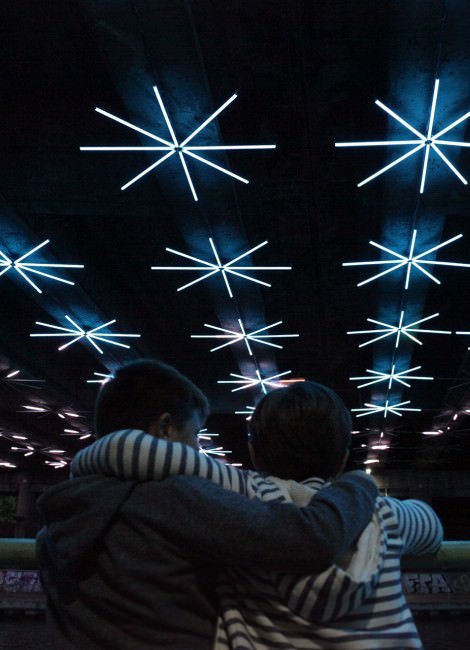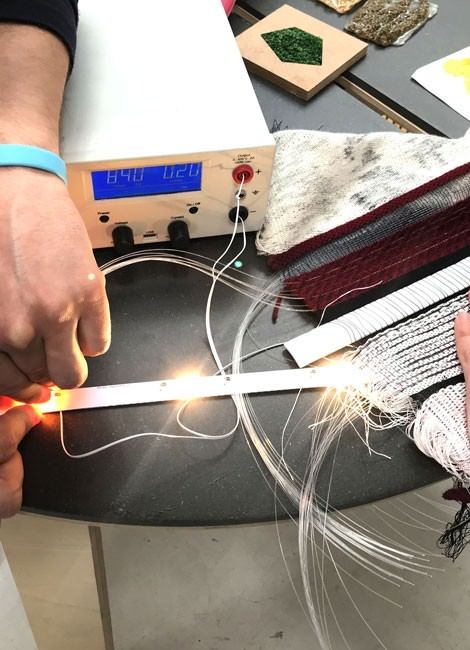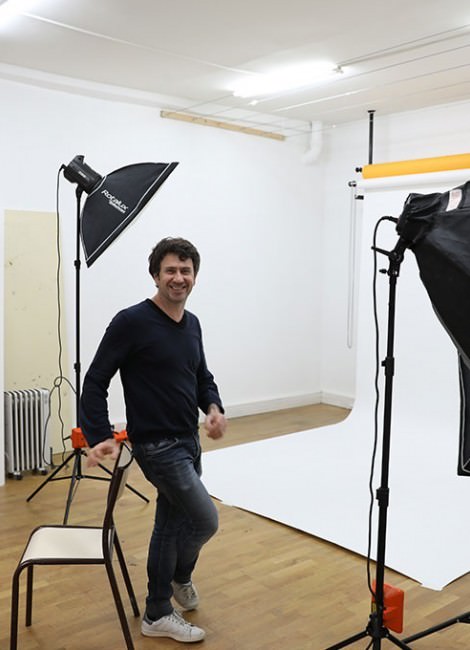
Becoming a creator of digital works
Art, digital and new technologies
The bachelor of art and technology encourages artists in-the-making to cultivate creative strategies, technical skills and critical thinking while exploring and developing new applications of technology and media in contemporary artistic practice.
Developing a critical vision of digital
The course aims to enable students to develop a critical and committed vision of digital transformations by positioning digital equally as a subject of theoretical study and a medium of creation. As such, the curriculum is articulated around the practical learning of digital tools and techniques and the acquisition of a cultural and critical foundation in digital humanities, in particular around the themes of big data, industry 4.0, robotics, artificial intelligence and life sciences.
By beginning with art and its foundations, the training will enable students to question these new mediums which are increasingly present in the field of contemporary artistic creation.

Varied fields of application
Digital technology is at the core of this programme, allowing students to enter the professional world as leaders and creators in this domain rather than in the role of a simple consumer of the ever-widening uses of digital.
There are many areas of professional integration, from the fields of contemporary art and performing arts to scenography, publishing and the production of works. Practices can also be varied, including interactive scenography, robotic/mechatronic devices, video mapping, virtual reality, video games, digital imagery and audiovisual creation.
Developing new creative processes
Digital can be used within an artistic practice to implement dynamic and interactive creative processes of form research. As such, the computer can be thought of as an extension of the body and the mind, with the ability to shape materials, much like drawing or sculpture, for example, but in an intangible space, a sort of virtual workshop, where this material is shaped by programmed algorithms.
While it may no longer be, strictly speaking, the artist’s hand that physically shapes the material, it is however the process of generating this form that is conceived and coded by the artist that is at work.
A course combining creativity and technique
The educational methodology of the bachelor of art and technology is founded upon a simultaneous and interwoven learning of art and digital. On the one hand is the acquisition of a cultural and theoretical background of the history and techniques of art brought into resonance with the appearance of thought and digital tools; and on the other hand is the practical learning of traditional and digital creation techniques, from design to representation and production of 2-D and 3-D shapes. In this combined creative approach, computer coding and drawing are practised to the same level.

Cutting-edge digital equipment
In support of the classes, students have access to technical workshops at the cutting-edge of digital techniques: a Fablab, a robotic workshop, a virtual reality workshop and a mechatronic workshop. Students also benefit from the video, photo, multimedia workshops.
Admissions procedure
The bachelor of art and technology is accessible via a competitive entrance exam. Two sessions take place, in June and in September. It is organised as followed:
Competitive exam steps | June session | Septembre session |
Administrative closing of the registration | 6th April 2020 | 6th April 2020 |
- Submission by each candidate of a 1 minute maximum video presentation on smartphone (.mp4 ou .mov): submit my video on the platform - Answer by each candidate to the online quizz test: answer to the online test It is the completion of the test and the submission of your video presentation that will enable us to select you. You will receive an email announcing the results a few days after completing this two steps. | 2nd March to 30th April | 2nd May |
Notification of the eligible candidates | 7th May | 20th August |
Examination of the eligible candidates: individual interview and group creation test | 18th May to 5th June | 4th Septembre |
Admission results | 12th June | 9th Septembre |
Beginnin of the class | 27th Septembre | 27th Septembre |
